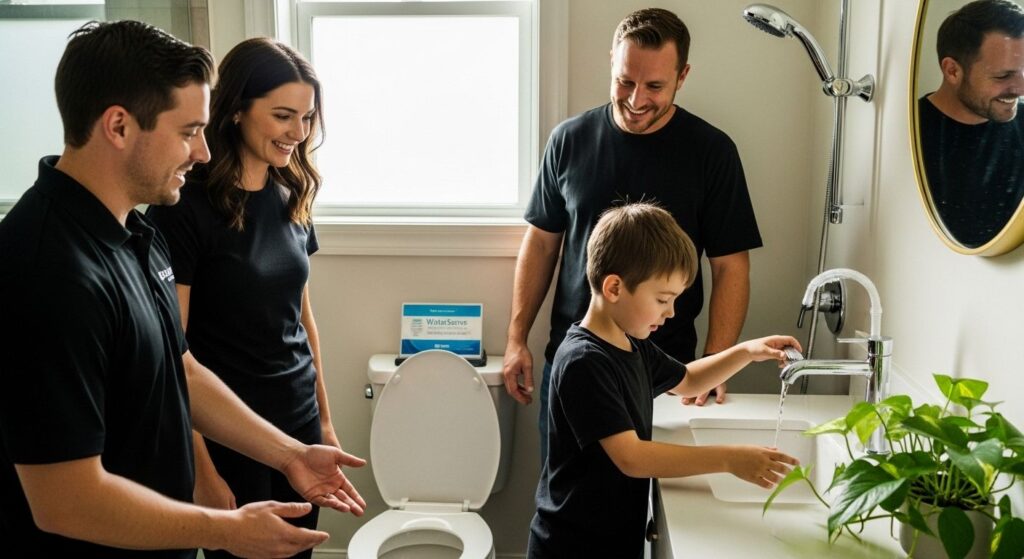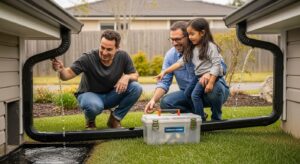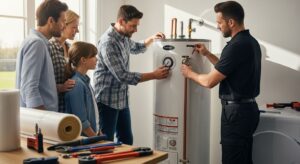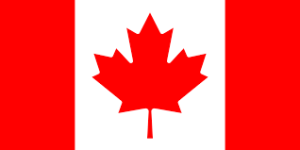Every drop of water in your home comes at a price. And the truth is, the average American uses about 82 gallons of water every single day, with toilets alone gulping nearly 30 percent of that. Most people think a few drips or an old faucet barely matter. Yet upgrading to water efficient fixtures is one change that slashes waste and saves money without any loss in comfort. So why are these simple fixes overlooked when they have such a massive impact?
Table of Contents
- Understand The Importance Of Water Efficiency
- Look For The Watersense Label
- Choose Low-Flow Showerheads And Faucets
- Invest In Dual-Flush Toilets
- Opt For Smart Irrigation Systems
- Consider Greywater Recycling Systems
- Schedule Regular Plumbing Maintenance
Quick Summary
| Takeaway | Explanation |
|---|---|
| Invest in Water-Efficient Fixtures | Upgrading to modern plumbing can reduce water consumption and utility bills significantly. |
| Look for the WaterSense Label | Choose faucets and toilets with this label to ensure at least 20% better water efficiency without losing quality. |
| Use Low-Flow Showerheads and Faucets | These fixtures reduce flow rates without sacrificing user experience, leading to thousands of gallons of water savings annually. |
| Consider Dual-Flush Toilets | They offer two flush options, allowing for substantial water savings while maintaining sanitation. |
| Schedule Regular Plumbing Maintenance | Conducting regular checks can prevent leaks and ensure your water-efficient fixtures are functioning optimally. |
1: Understand the Importance of Water Efficiency
Water efficiency is more than just a buzzword – it’s a critical approach to conserving our planet’s most precious resource. Modern plumbing fixtures play a substantial role in reducing water consumption and minimizing environmental impact. According to the U.S. Environmental Protection Agency, Americans use approximately 82 gallons of water per person daily, with nearly 30% attributed to toilets alone.
Understanding water efficiency requires recognizing the significant impact that seemingly small changes can make. By investing in water efficient plumbing fixtures, homeowners can achieve multiple benefits:
-
Substantial reduction in monthly water utility bills
-
Decreased strain on local water infrastructure
-
Meaningful contribution to environmental conservation efforts
Water inefficient fixtures waste substantial volumes of water through constant leaks, outdated designs, and poor performance. Modern water efficient plumbing fixtures leverage advanced engineering to minimize water usage without compromising functionality. These innovative solutions use precision technologies that control water flow, regulate pressure, and eliminate unnecessary waste.
Consider how upgrading your home’s plumbing can transform water consumption patterns. Learn more about our sustainable plumbing solutions that help Ottawa residents reduce their environmental footprint while saving money. Implementing water efficient fixtures is not just an individual choice but a collective responsibility towards sustainable living.
2: Look for the WaterSense Label
The WaterSense label represents a critical benchmark for water efficient plumbing fixtures, offering homeowners a reliable guide to making smart purchasing decisions. According to the U.S. Environmental Protection Agency, products bearing this label are certified to be at least 20 percent more water-efficient compared to standard models, without compromising performance quality.
When shopping for plumbing fixtures, the WaterSense label serves as a trusted indicator of water conservation and quality. Key advantages of selecting WaterSense labeled products include:
-
Guaranteed performance standards verified by independent testing
-
Potential for significant water and energy bill reductions
-
Direct contribution to environmental sustainability efforts
The WaterSense certification process is rigorous, ensuring that each labeled product meets strict criteria for water efficiency. Manufacturers must demonstrate that their fixtures not only reduce water consumption but also maintain exceptional functionality and durability. This means homeowners can confidently select fixtures knowing they are investing in both environmental responsibility and long-term performance.
Plumbing fixtures typically covered by the WaterSense label include toilets, showerheads, bathroom faucets, and irrigation systems. When replacing existing fixtures, prioritizing those with this label can result in substantial water savings over time. Explore our sustainable plumbing solutions to learn how professional installation can maximize the benefits of water efficient fixtures. Remember, each WaterSense labeled product represents a small but meaningful step towards responsible water management in your home.
3: Choose Low-Flow Showerheads and Faucets
Low-flow showerheads and faucets represent a powerful strategy for reducing household water consumption. According to the U.S. Department of Energy, federal standards now mandate maximum flow rates that significantly reduce water usage without compromising user experience.
Modern low-flow fixtures offer substantial benefits for homeowners committed to water conservation:
-
Potential savings of thousands of gallons of water annually
-
Reduced energy costs associated with water heating
-
Minimal impact on water pressure and shower quality
Typical low-flow showerheads are designed to use no more than 2.0 gallons per minute, compared to older models that consumed up to 3.5 gallons per minute. This represents a dramatic reduction in water consumption. Advanced engineering ensures that these fixtures maintain excellent water pressure through innovative design techniques like aerating streams and precision nozzle configurations.
Faucets have similarly evolved, with high-efficiency models reducing flow rates to 1.5 gallons per minute without sacrificing functionality. These innovations demonstrate that water conservation does not require personal comfort compromise. Check out our expert faucet installation guide to understand how professional installation can maximize the performance of your new water efficient fixtures.
Consumers should look for WaterSense labels and compare manufacturer specifications when selecting low-flow fixtures. By making informed choices, homeowners can significantly reduce their water footprint while enjoying modern, efficient plumbing technology.
4: Invest in Dual-Flush Toilets
Dual-flush toilets represent a revolutionary approach to water conservation in residential plumbing systems. According to the U.S. Environmental Protection Agency, these innovative fixtures use at least 20 percent less water than standard toilets, offering significant environmental and financial benefits.
The primary advantage of dual-flush toilets lies in their intelligent design, which provides two distinct flushing options:
-
A reduced water volume flush for liquid waste
-
A full volume flush for solid waste
Traditional single-flush toilets typically use 1.6 gallons per flush, whereas dual-flush models can reduce water consumption to as low as 1.1 gallons for liquid waste. This strategic approach means households can dramatically cut their water usage without compromising sanitation or performance.
Consumers should consider several key factors when selecting a dual-flush toilet:
-
Total water savings potential
-
Compatibility with existing plumbing infrastructure
-
Long-term maintenance requirements
Modern dual-flush toilets incorporate advanced engineering to ensure effective waste removal while minimizing water consumption. The mechanism allows users to select the appropriate flush volume, promoting conscious water usage. Explore our comprehensive bathroom plumbing upgrade options to understand how professional installation can maximize the efficiency of your new water-saving toilet.
Beyond immediate water savings, dual-flush toilets contribute to broader environmental conservation efforts and can potentially reduce household water bills, making them a smart investment for environmentally conscious homeowners.
5: Opt for Smart Irrigation Systems
Smart irrigation systems represent a technological breakthrough in water efficient plumbing, offering unprecedented control over outdoor water consumption. According to the U.S. Department of Energy, these advanced systems can reduce water usage by 15 to 40 percent compared to traditional irrigation methods.
The key technological features of smart irrigation systems include:
-
Weather-responsive controllers that adjust watering schedules based on real-time environmental conditions
-
Soil moisture sensors that precisely measure ground hydration levels
-
Automatic shut-off mechanisms during rainfall or excessive moisture
These intelligent systems go beyond simple timing mechanisms. Sophisticated sensors and algorithms analyze multiple environmental factors such as temperature, humidity, wind speed, and soil moisture to create optimal watering schedules. This approach ensures landscape health while dramatically minimizing water waste.
Homeowners can expect multiple benefits from implementing smart irrigation technology:
-
Significant reduction in water consumption
-
Lower utility bills
-
Healthier landscape maintenance
By integrating advanced moisture detection and predictive weather monitoring, smart irrigation systems eliminate the inefficiencies of traditional sprinkler setups. Discover our sustainable landscaping solutions that can help transform your outdoor water management strategy. Modern smart irrigation represents more than a technological upgrade it is a commitment to responsible water stewardship and environmental conservation.
6: Consider Greywater Recycling Systems
Greywater recycling systems represent an innovative approach to water conservation, transforming wastewater from sinks, showers, and laundry into a valuable resource for non-potable applications. According to the U.S. Environmental Protection Agency, these systems can dramatically reduce potable water consumption by repurposing water typically considered waste.
The fundamental principles of greywater recycling include:
-
Collecting water from relatively clean sources like bathroom sinks and washing machines
-
Filtering and treating the water to remove contaminants
-
Redirecting treated water for landscape irrigation or toilet flushing
Modern greywater systems employ sophisticated filtration technologies that ensure safe and hygienic water reuse. Advanced membrane bioreactors and biological filtration techniques can transform household wastewater into a reliable secondary water source, minimizing environmental impact and reducing utility expenses.
Homeowners considering greywater recycling should evaluate several critical factors:
-
Initial installation costs
-
Local regulatory requirements
-
Potential water savings
By implementing a greywater recycling system, households can potentially reduce their potable water consumption by up to 40 percent. Learn more about our eco-friendly plumbing solutions that support sustainable water management. These systems not only conserve water but also contribute to a more environmentally responsible approach to residential water usage.
7: Schedule Regular Plumbing Maintenance
Regular plumbing maintenance is a critical strategy for preserving water efficient fixtures and preventing unnecessary water waste. According to the U.S. Environmental Protection Agency, proactive maintenance can significantly reduce water consumption and protect your household’s plumbing infrastructure.
Homeowners should prioritize several key maintenance activities:
-
Conducting quarterly leak inspections
-
Checking fixture seals and connections
-
Monitoring water pressure and flow rates
Undetected leaks represent a substantial source of water loss. Small drips can waste hundreds of gallons of water annually, transforming what seems like a minor issue into a significant environmental and financial concern. Modern maintenance techniques involve sophisticated diagnostic tools that can identify potential problems before they escalate.
Comprehensive maintenance should focus on identifying and addressing potential issues:
-
Examining pipe connections for corrosion
-
Testing water pressure regulators
-
Evaluating the performance of water efficient fixtures
Timely interventions can prevent minor problems from developing into expensive repairs. Explore our comprehensive plumbing maintenance recommendations to understand how professional assessments can optimize your home’s water systems. By investing in routine maintenance, homeowners protect their water efficient plumbing fixtures, reduce potential water waste, and ultimately contribute to broader water conservation efforts.
Below is a comprehensive table summarizing the core tips and benefits covered in this article on water efficient plumbing fixtures for homeowners.
| Tip/Topic | Key Points & Benefits | Example Technologies/Actions |
|---|---|---|
| Water Efficiency Importance | Reduces household water use, bills, and environmental impact; relieves water systems | Upgrade to modern, precise plumbing fixtures |
| WaterSense Label | Certifies products with at least 20% higher efficiency, ensures performance, saves money | Toilets, faucets, showerheads, irrigation systems |
| Low-Flow Showerheads & Faucets | Thousands of litres in annual savings, low energy use, no comfort loss | Showerheads at ≤2.0 gpm, faucets at ≤1.5 gpm |
| Dual-Flush Toilets | Offers two flush options, can cut toilet water use by 20% or more | 1.1 gal for liquid/1.6 gal for solids |
| Smart Irrigation Systems | Sensors and controllers cut outdoor water use by up to 40%, ensure healthier landscapes | Weather-based/soil moisture systems |
| Greywater Recycling Systems | Repurposes sink/shower water for irrigation or toilets, saves up to 40% of potable use | Household filtration and water reuse systems |
| Regular Plumbing Maintenance | Leak inspections and upkeep prevent waste, protect fixture efficiency and lifespan | Check for leaks, test seals and water pressure |
Upgrade Your Ottawa Home with Water Efficient Plumbing Solutions
Are you concerned about high water bills, outdated fixtures, or leaks wasting precious resources? If you want to put the 7 essential water efficiency tips into action and see real change, trusted professional help can make all the difference. Households in Ottawa often struggle with inefficient plumbing, frequent leaks, and older appliances that waste water despite your best efforts. The solutions you learned about—like dual-flush toilets, low-flow showerheads, and smart irrigation—are only as effective as their installation and maintenance. Read more on our Uncategorized Plumbing Expertise page to see how we approach every unique plumbing challenge in the area.

Take control of your water consumption and enjoy a worry-free plumbing system today. The Delta Plumbers Ottawa team are local experts who can help you select, install, and maintain the most reliable water efficient plumbing fixtures for lasting savings and sustainability. Don’t wait for the next leak or spike in your bill. Visit our site now and request your personalized plumbing upgrade so you can save water, save money, and protect your Ottawa property for years to come.
Frequently Asked Questions
What are water-efficient plumbing fixtures?
Water-efficient plumbing fixtures are designed to reduce water consumption without sacrificing performance. These include low-flow showerheads, faucets, dual-flush toilets, and appliances that conserve water and energy.
How do I identify water-efficient fixtures?
Look for the WaterSense label, which certifies that products are at least 20% more water-efficient than standard models while maintaining quality performance standards.
What are the benefits of using low-flow showerheads and faucets?
Low-flow showerheads and faucets can significantly lower household water usage, resulting in annual water savings of thousands of gallons. They also reduce energy costs associated with water heating, all while providing a satisfying user experience.
What is greywater recycling, and how does it contribute to water efficiency?
Greywater recycling involves reusing water from sinks, showers, and laundry for non-potable applications, such as irrigation or toilet flushing. This innovative approach can dramatically reduce potable water consumption by repurposing water that would otherwise be wasted.









